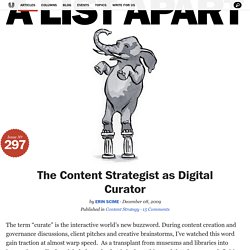

Hacking History. Hacking History One of the primary places computer hacking originated was at MIT during the late Fifties and Sixties. A group of students, many of who came from the Tech Model Railroad Club (which had an incredibly complicated switching system for its model railroad) were able to use a couple MIT computers very late at night. So they started to write programs. Showing how hierarchical computer access was, one computer (an IBM 704 worth several millions) was guarded by a group of people who were called "The Priesthood. " Students were not even allowed to touch it! As computer time was so valuable, hackers developed the ethic of not wasting it.
It was based on early hackers, like at MIT, that Steven Levy developed the "Hacker Ethic" in his landmark 1984 book: The key word in the first statement is "access. " The power behind the second statement is that it calls for "all" information to be free, not just some. Hackers did not like large bureaucracies like IBM. Curador de contenidos: Híbrido entre bloguero y community manager. Aunque para algunos los son una suerte de ; o sea, blogueros que escriben de manera resumida, soy de los que piensan que su labor es más la de influenciar en la audiencia de interés.
La similaridad entre un bloguero y un CM no es mucha. De hecho, los blogueros que influencian son potencialmente buenos community managers, sin embargo, el elemento ético entra en contradicción con esa premisa por lo que la mayoría de los blogueros profesionales se abstienen. Quiero decir que el bloguero por lo regular es un o conocedor de la industria de referencia en su contenido, pero cuando se le asigna un trabajo como CM para una marca específica vería reducir su nivel de influencia global además que pudiera estar envuelto en un conflicto de intereses debido a su amplio conocimiento de la industria lo que involucra metodología de competidores y rivales, acceso previo a propiedad intelectual, planes de mercadeo, estrategia de reclutamiento de personal clave, entre otros.
No se apresuren. How To Recognize Great Content Curation: Curating Curators. (Thanks to Giuseppe Mauriello for finding this deck) Dilbert characters are talking about content curation..

Scoop.It one of the premiere content creation tools is now out beta. In my own curation of content, I’m discovering many more content curators out there. Everyone can be a content curator! That prompted Robin Good, a master curator, to ask “How do we distinguish good curation from bad?” • Optimizes • Edits • Formats • Selects • Excerpts • Writes • Classifies • Links • Personalizes • Vets • Credits • Filters • Taps • Suggests • Searches • Scouts • Hacks Filters and Searches • Is Transparent • Recommends • Crowdsources One best practice of good curators that Robin identifies and that I find very useful in my own curation practice, is to have a small group of trusted curators on your topic that you follow. I think a great curator is a good listener and a keen observer who selects content that “speaks to the audience’s listening”. Does your nonprofit use content curation? Enter the Digital Curator: Information Constantly Rushes Past Us, And.
Origen término y controversia. The Content Strategist as Digital Curator. The term “curate” is the interactive world’s new buzzword.

During content creation and governance discussions, client pitches and creative brainstorms, I’ve watched this word gain traction at almost warp speed. As a transplant from museums and libraries into interactive media, I can’t help but ask what is it about this word that deserves redefinition for the web? Article Continues Below Curation has a distinguished history in cultural institutions. In galleries and museums, curators use judgment and a refined sense of style to select and arrange art to create a narrative, evoke a response, and communicate a message.
For a long time, we’ve considered digital objects such as articles, slideshows, and video to be short-lived. Consider some examples: NYTimes.com Topics employs content managers who sift through The Times’ archive to create new meaning by grouping articles and resources that were filed away (or distributed to library databases). What’s the payoff? International Journal of Digital Curation.